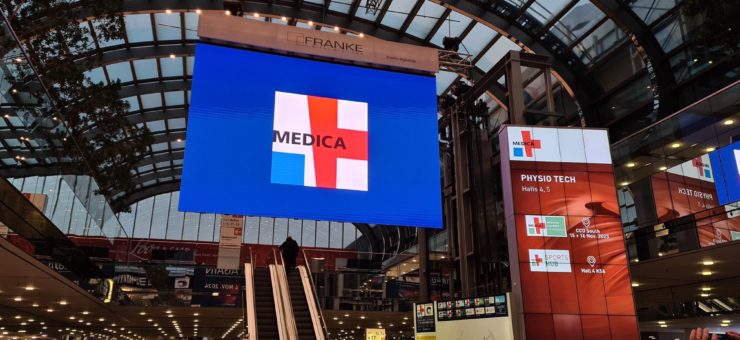Insights from Medica 2023 – Diagnostics, wound care and packaging
29 November 2023
Alex Vasiev visited the MEDICA conference in October and came home with lots of new ideas and insights. The conference was full of innovative ideas and designs, and Alex focussed on three key areas of the show. Here are his findings:
Diagnostics:
Automation Advancements: Centralized diagnostic labs are in a “race to the top” with a surge in high-throughput and large-scale automated analytical systems.
Approaches to Amplification: Isothermal amplification techniques such as LAMP are gaining traction for portable PCR-like accuracy, but PCR systems remain the gold standard. For these benchtop systems, the focus is on GxP, workflow integration and data processing.
Lateral Flow Innovation: Cellulose-based lateral flow media is widespread, but there is an increasing integration of this with electronics for hybrid diagnostic systems. This leads to the possibly of using it in stabilizing electrochemical reactions, creating time buffers and potentially on-strip amplification.
Multiplexing Momentum: Multiplexing was the most common term, with increasing interest in AI and machine learning to cross-correlate multiple biomarkers from a single sample. A number of suppliers claim to have incorporated some form of AI into their software.
Adhesives and Wound Care:
Silicone Gel Surge: Silicone gel materials are known in wound care but are continuing to improve to provide less painful and longer-lasting dressings, evolving in permeability and surface chemistry.
Wearables’ Impact: The improvements in adhesives are partially due to the rapid growth of the wearables market. This is driving demand for longer-lasting, lighter adhesives, resistant to showering and sweat.
Transparent Innovations: There is growing interest in transparent dressings for at-home wound monitoring without the need for frequent dressing changes.
Tech Slow Uptake: The ability to produce connected and smart dressings exists, but market uptake is gradual. Suppliers remain optimistic, making advanced tech available for future shifts.
Packaging:
Supply Chain Resilience: Shortages of materials like PETG seen during the COVID pandemic are resolving as companies bring raw materials closer to supply chains.
Packaging Innovations Amid Tyvek Shortages: The Tyvek shortage led to a number of packaging innovations, including ported designs for a number of formats to cut material requirements. Medical paper and laminates have also seen growth as an alternative (although limited in application).
Alternative Materials: Concerns about Per- and polyfluoroalkyl substances (PFAS) and the potential for an EU ban being enforced in the future is driving exploration of alternative lubricious materials and coatings for medical device parts.


